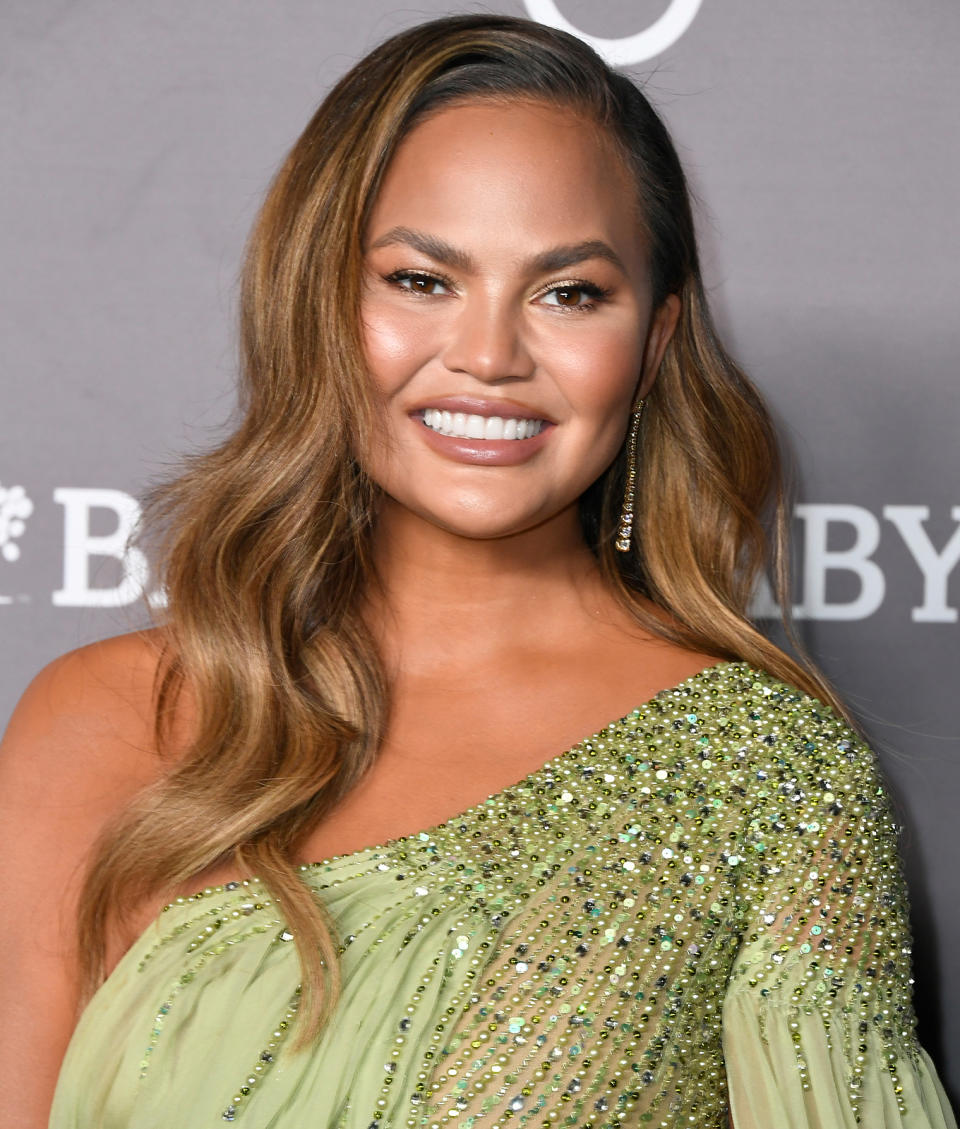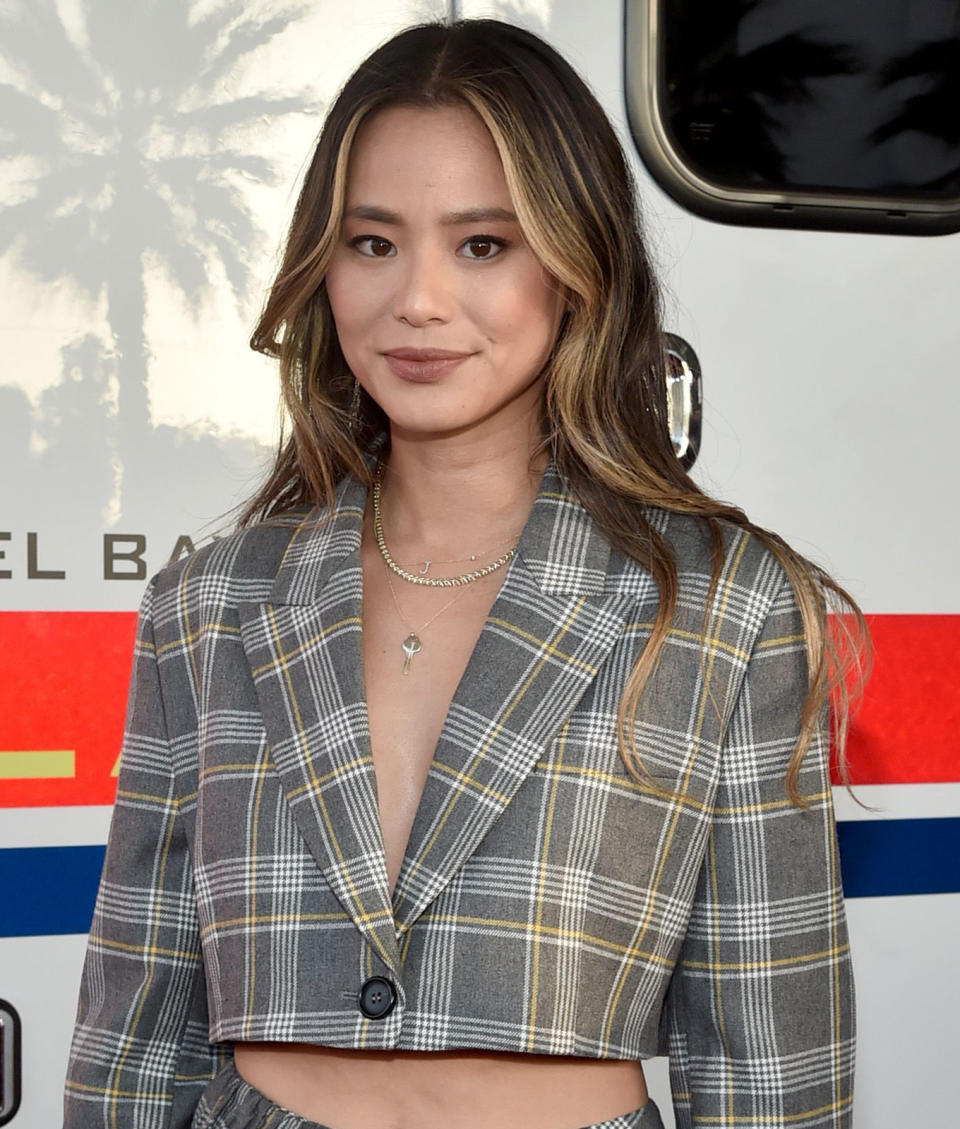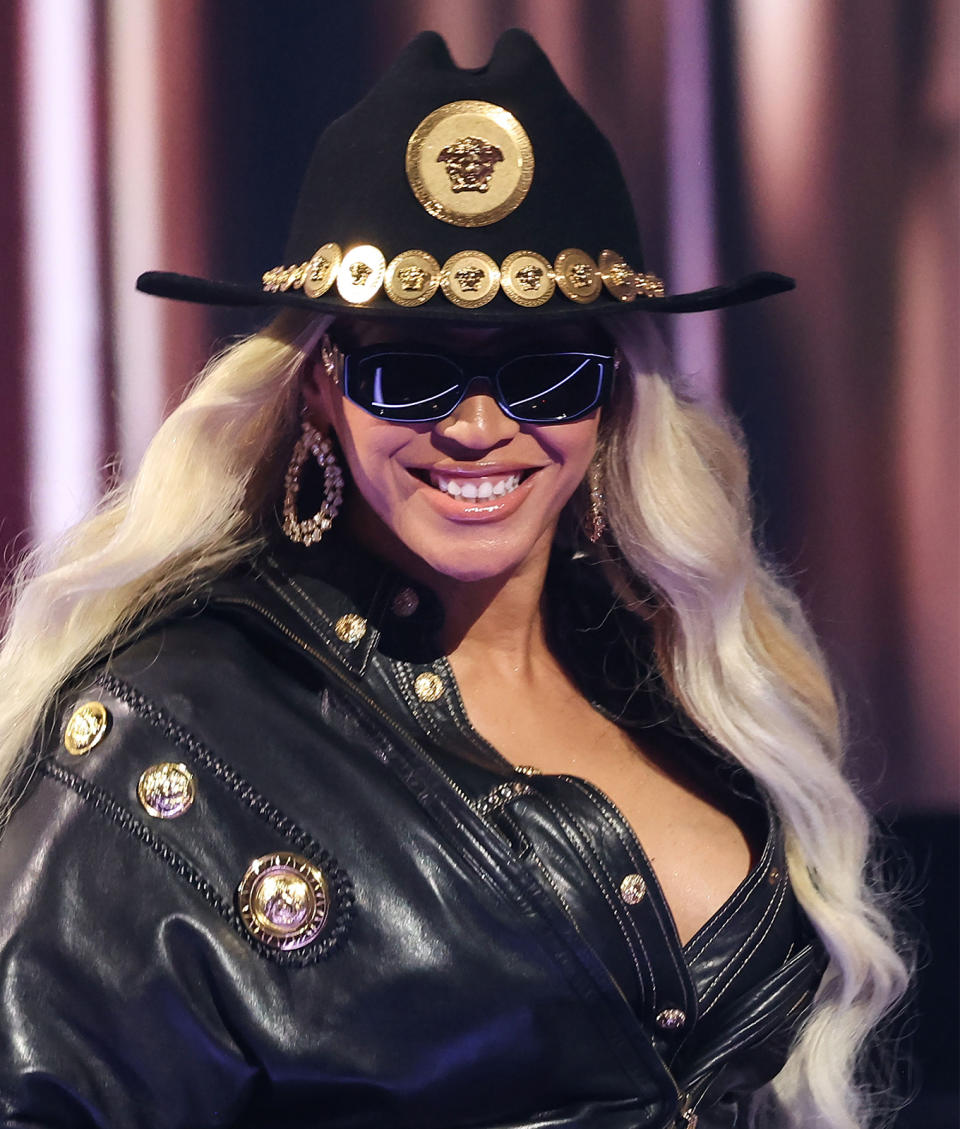How to Go From Brown to Blonde Hair Without Frying It, According to a Celerity Hairstylist
- Oops!Something went wrong.Please try again later.
Beyoncé, Katy Perry, Jessica Alba and Dua Lipa: All of these ladies (and countless others, including yours truly) have gone from their naturally brunette locks to various shades of blonde at some point over the last few years—some of them more than once.
It's a major transformation, so if you’re considering making this change for the first time, there are some things you should know beforehand to minimize the damage you do to your hair in the process. Not to worry—I asked celebrity hairstylist Glen Oropeza (he’s taken Sydney Sweeney between both shades) about everything you need to know before going blonde.
How Often Should You Get a Haircut Based on Your Hair Type and Length
Meet the Expert
Glen Oropeza is a highly sought after Hollywood hair stylist with a celebrity clientele that includes Sydney Sweeney, Sofia Richie and Kylie Jenner. Oropeza began his career in Baltimore, before moving to New York to assist with styling for fashion brands and events like New York Fashion Week. He then moved to Los Angeles, where he worked as a Color Specialist at Spoke and Weal salon in West Hollywood.
Options for Turning Brown Hair Blonde

Frazer Harrison/Getty Image
The most common way to go from brown hair to blonde is to do a double-process, which involves stripping your base or natural color before toning it to your desired shade. Two steps equal double process. Note: If you're a natural brunette who is trying to go blonde, a single process won't cut it because you always have to lighten or lift your color first.
This answers another common question that comes up, which is can you go from brown hair to blonde without bleach? In short, no, because you need to strip your naturally brown hair of pigment to go blonde and the only way to do that is through bleach.
Other ways to go blonde involve getting partial or full highlights, balayage or ombré, all of which use bleach to lighten up darker strands, but rather than being applied all over your head from root to tip, it's only applied to certain sections of your hair.
So, to quickly recap the ways you can go from brown hair to blonde:
double-process
partial highlights
full highlights
balayage or ombré
Choosing the Right Shade of Blonde for Your Skin Tone

Samir Hussein/Stefania D'Alessandro/Getty Images
Consult with your hairstylist before deciding how light to go, but to give you some starting parameters, if you have cool undertones, platinum or baby blonde hair can complement your coloring (especially when paired with a shadowed root, which adds dimension to the overall shade and keeps you from looking washed out). For those with warm undertones, buttery or golden blonde hues can be more flattering.
How Long Does it Take to Go From Brown to Blonde Hair?
This will depend on how much hair you have, how dark your hair is to start and how blonde you're going. For example, if you have light brown hair and you're just getting partial highlights, that's going to take far less time than if you're a dark brunette trying to go full-on platinum (which most stylists caution against doing in one appointment, by the way). Based on my own experiences throughout the years, I'd ballpark anywhere between four to six-plus hours, but I would call the salon beforehand and ask for an estimate so you can plan your day accordingly.
Going From Brown to Blonde Hair Professionally
What Happens During The Hair Dyeing Process?

Paul Archuleta/Getty Images
"Going from brunette to blonde is a challenging task that largely depends on how dark your natural hair color is to start," says Oropeza. For example, if you have light or medium brown hair, you’ll only need to lift (that’s stylist-speak for lighten with bleach) your color a level or two; on the other hand, if you have dark brown hair that borders on black, you’ll need to lift it several levels.
"Lightening your hair causes the cuticles of each strand to expand, which will definitely weaken the shaft. That’s why it’s especially important that your stylist uses the right products during your appointment. I always recommend using a lightener that has a combination of moisture and protein in it to protect the strength of your hair, so it still looks nice and healthy afterward," Oropeza explains. "I also prefer to lighten it in a few stages and always use lower volume developers to lift the hair slowly and steadily so we don’t cause too much breakage."
Tips for Talking to Your Stylist To Get Your Desired Blonde Shade

Paul Bruinooge/Getty Images
Come into the salon with a crystal-clear idea or, better yet, a few visuals of the color and tone you’re hoping to achieve rather than a vague description. Your idea of "ashy" or "honey" blonde could be vastly different from your stylist’s and things can easily get lost in translation; a photo leaves little room for misinterpretation.
On that note, when searching for photos to bring in, try to look for examples of people who have similar skin tones (and eye colors) as you do. This will ensure that you end up with a color that flatters your complexion, rather than washes you out or looks super unnatural.
Oropeza also advises that you always ask your stylist, "What can we realistically do in one day?" Again, depending on how dark your hair is and how much you want to lighten it, it can take several appointments to reach your desired shade. "It’s better to go lighter in a few stages to maintain the health of your hair than to blast it with bleach all at once." (True story: I made the mistake of going blonde in one appointment and ended up with broken spikes of hair in the back of my head that took months to grow out evenly.)
A final note: "Blonde hair requires more maintenance than brown, so make sure to ask how often you’re going to have to come in for touch-ups before you commit," says Oropeza. (Translation: Going and staying blonde will require some budgeting.)
How Should You Prep For Your Appointment?

Sean Zanni/Getty Images
"I highly recommend not washing your hair for a minimum of one to two days prior to your appointment," advises Oropeza. This will allow some time for your hair to form a protective coat of natural oils on the scalp (which you’ll definitely be thankful for once the bleach is applied).
Also, hands off your head. "Everything we do to our scalp—like scratching or rubbing it—causes tiny little micro abrasions that can increase its sensitivity," says Oropeza.
In the weeks leading up to your appointment, up your moisture game. Lightening your hair—no matter how careful you and your stylist are—will cause some amount of damage. That said, it’s important to start with the healthiest hair possible. Many stylists (and our editors) swear by Olaplex, a bond-repairing treatment that protects and strengthens hair.
Red Flags To Look Out For During Your Appointment

Stephane Cardinale - Corbis/Getty Images
"I’ve heard a lot of blonding nightmares and I, myself, go blonde once or twice a year, so I’ve experienced my fair share of chemical burns and discoloration throughout the years," says Oropeza.
This is why communication is key. Though some amount of discomfort is—sorry to say this—expected, "There is a difference between a bit of stinging on your scalp and being in full-on pain," warns Oropeza. "If it ever gets to a point where it’s unbearable, it’s best to tell your stylist. Always, always speak up, so they can reassess the situation."
And if the thought of bleach burn absolutely terrifies you, consider getting highlights to lighten up your strands instead. Highlights or balayage are generally applied away from the roots, which will minimize the amount of bleach that comes in contact with your scalp altogether. More blonde, less burn.
Dying Your Hair From Brown to Blonde At Home
It should be stated up top that all of the stylists I've spoken to about this topic strongly discourage doing this at home. Bleach is extremely finicky and requires a level of precision and knowledge (i.e., knowing the specific ratios of bleach to developer) to get your desired shade without over-processing your hair. Best case scenario, you'll end up with a brassy color; worst case, you can cause a lot of breakage.
As our editor in chief Jillian Quint attests, "In my early 20s, I tried to dye my dark black hair blonde, and it was not pretty. The result, which came from a $7 drugstore bottle, came out extremely brassy and more orange than blonde. Bottom line: Learn from my mistakes."
If you decide to try going blonde at home anyway, please start with a small strip-test on a piece of hair behind your ear before you apply the bleach all over. This will give you a sense of what to expect, and, in case you aren't happy with the color, you've done minimal damage.
What Is The Best Way To Take Care Of Your Hair Afterward?

Kevin Mazur/Getty Images
First things first: You’ll want to get a purple shampoo and keep it in steady rotation. "There are so many great products out there now, but I stand by Kérastase Blond Absolu Ultra Violet shampoo because it deposits just the right amount of purple pigment to counteract any brassiness and keeps your toner from fading too quickly," says Oropeza. Use it once a week or whenever you start to notice any unwanted yellow or orange tones starting to creep in.
A few other things you might want to stock up on? A sulfate-free shampoo for regular use, a moisturizing mask (which you should use weekly), a daily heat protectant product and a microfiber hair towel (because regular cotton towels can further rough up the cuticle and cause frizz and breakage). Again—and we can’t state this enough—having newly blonde hair will require more maintenance.
Dealing with the Grow-Out Phase and Root Touch-Ups
Again, this is a discussion to have with your hairstylist, but some ways you can ease the grow-out phase from your newly blonde hair back to your natural color is to ask for a "root melt," which blends the line of demarcation between darker roots and lighter ends, so it's less obvious. You could also add lowlights or get a gloss that's closer to your natural color to soften the transition.
Pros and Cons of Going From Brown to Blonde
Pros:
Cons:
Is There Anything Else You Should Know Before Going Blonde?

Lionel Hahn/Getty Images
"Like anything there’s a trade-off. Being blonde truly is a lot of fun and it’s definitely going to turn some heads, but you will be in the salon a lot more often and you’ll be buying way more conditioner than you’re probably used to," jokes Oropeza.
As a former ex-blonde myself (and I’m talking about a jet black-to-platinum transformation here), I can confirm: It was a very fun, very expensive experience, but I have no regrets.
I’ll just add three things: 1) The scalp burn does lessen with subsequent appointments and 2) The texture of your hair will change (this is particularly helpful if you have fine or slippery strands, as the bleach makes your strands look and feel a bit thicker 3) Bring a snack or two and a book to your appointment because it will take longer than you think.
I Got Cherry Blossom Pink Highlights from Hailey Bieber's Colorist (& I Have Extremely Dark Hair)

